On Saturday, January 21, I attended a presentation at the Walt Disney Family Museum called "Mineral King: Walt's Lost Last Project." Many of my Disney friends had actually never heard of the Mineral King project before. Well I hope they are reading this article! The presenters were: Urban Planner, Community Engagement Specialist and Author Sam Gennawey, past Disney CEO, Walt Disney Family Museum Founder and Walt’s son-in-law Ron Miller, and architect David Price, son of Disney Legend Harrison “Buzz” Price.
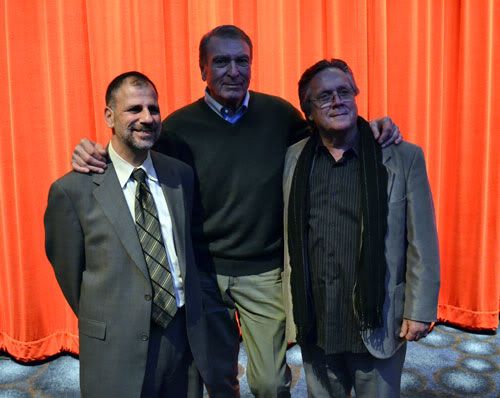 |
| Sam, Ron, David |
In 1928, Steamboat Willie was the first cartoon ever produced with synchronized sound. In 1932, Flowers and Trees was the first cartoon to be released using the full-color three-strip Technicolor process. It also won the first ever Academy Award for Animated Short Subjects. In 1955, Disneyland opened, forever changing the future of the amusement park. Walt Disney was an innovator. And since his arrival in Hollywood in 1923 up until the day of his untimely passing in 1966, he completely and constantly revolutionized the entertainment industry.
Needless to say, his ski resort was going to be awesome.
1939: Austrian skier and instructor Hannes Schroll opened the Sugar Bowl Ski Resort. One of his students was Walt Disney himself. He asked Walt to invest in the resort, and Walt obliged by handing over a check for $2,500 (in 1939 dollars – that would be close to $40,000 in 2012). In gratitude Schroll changed Mt. Hemlock’s name to Mt. Disney. Walt loved to ski and took his family on many trips to the Sugar Bowl. And Schroll made a contribution of his own to the Disney Company. Those of you who have seen the Goofy short cartoon The Art of Skiing may recognize this little nugget! Yep, that’s Schroll’s yodel.
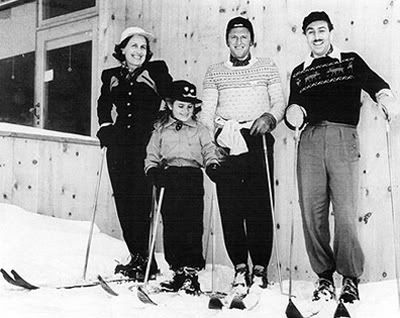 |
| Lillian Disney, Diane Disney, Hannes Schroll, Walt Disney |
1958: Walt traveled to Switzerland to check on the filming of the adventure film Third Man on the Mountain. The film was based on the true story of a young man's quest to scale the Swiss mountain that took the life of his father. While there, Walt found himself staring at the mountain for hours. At the time, they wanted to add an E-ticket attraction to Disneyland. Also, there was a huge unsightly Skyway tower surrounded by a hill (comprised of the dirt that was dug up to build Sleeping Beauty’s Castle and its moat) called “Holiday Hill” that Walt wasn’t too crazy about. Picture Walt staring at the Matterhorn in Switzerland, and in his mind seeing a huge dirt hill, and that ugly metal tower. While he was staring at the Swiss Matterhorn, he was looking at Disneyland’s Matterhorn, the perfect solution to cover that unattractive metal tower. It was on that trip he fell in love with the small mountain town Zermatt.
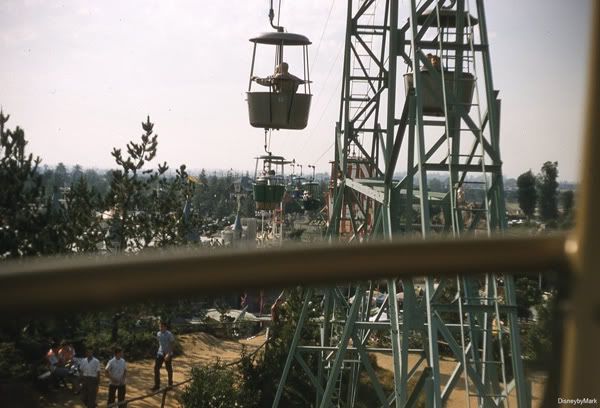 |
| Holiday Hill, and one tall green eyesore -- (awesome) Photo courtesy of disneybymark.com |
1960: Walt Disney was asked to produce the opening and closing ceremonies for the Winter Olympics in Squaw Valley. The first Olympic games ever televised, Walt’s winter endeavor was an enormous success. Now Walt Disney had his eyes on a new way to entertain families.
Mineral King
Mineral King is a valley located in Central California, roughly 100 miles east of Fresno. It started out as a silver mining camp back in 1873. In the 1960’s, an environmental organization called The Sierra Club supported the idea of a ski resort being built there. Many bids came in, and although they didn’t place the largest bid, the winner was Disney. A source close to the project was quoted in saying, “I am delighted that Walt Disney was awarded the Mineral King project. In his hands, we can rest assured that its natural beauty will remain unspoiled.”
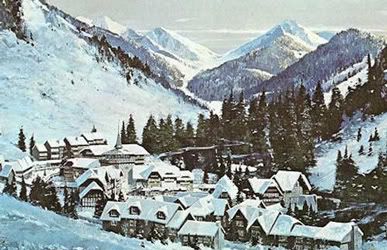 |
| Artist rendering for the Mineral King project |
Walt had a great vision for every project he worked on, and this one was no different. It was going to be family-friendly, unlike the other ski resorts of the day that largely catered to adults. He also knew the importance of not limiting the ski resort to being, well, a ski resort. In the televised announcement of the Mineral King project, Walt himself noted the great potential for summer activities, making it a planned year-round resort. In fact during the planning process, it was determined that the winter months would only comprise around 40% of Mineral King’s annual visitors. They also calculated the resort would host about 14,000 people a day. To minimize congestion they would construct an underground “Utilidoors” system, much like what ended up in Walt Disney World’s Magic Kingdom years later. The signature restaurant was to be named “Sky Crown,” and many incarnations of its logo can be found online.
Always taking the children into consideration, Walt had ideas to keep them entertained after their day on the slopes. Disney began designing a Wilderness-themed audio-animatronic show featuring a bunch of cheerful, singing bears. Sound familiar? It should, because that little show ended up in both Disneyland and Walt Disney World.
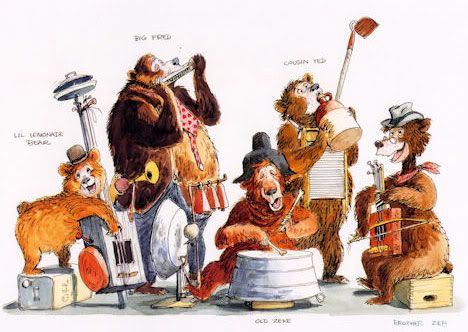 |
| I miss these guys in Disneyland |
After Walt passed away in December of 1966, the company was determined to go forward with the project. Ironically, the same organization that encouraged this project in its early stages would end up becoming its biggest opponent. The Sierra Club decided that too much precious land and resources would have been sacrificed in the creation of this sure-to-be heavily visited destination, and fought against it all the way to the Supreme Court. The battle waged on into the late 70’s, and was pretty much over once Mineral King was made part of Sequoia National Park.
Like many Disney fans I am endlessly fascinated with what could have been if Walt had lived a little bit longer. The difference between Epcot (the city) and Mineral King is Mineral King was a lot closer to actually happening even after Walt’s passing. And after hearing Ron Miller (CEO of the Disney Company after Walt) lament the project’s fate, and marvel at what it could have been, it makes me just a little bit sadder that I won’t be enjoying an amazing meal at Sky Crown after an afternoon of snowboarding this winter.
Below are some random tidbits, anecdotes, and even a little playful banter between Ron Miller and his wife Diane Disney Miller.
-While in Switzerland Walt mailed a postcard back to Walt Disney Imagineering, attention Harriet Burns. On the front? A picture of the Matterhorn. On the back? “Build this.”
-As part of the entertainment for the 1960 Winter Olympics, Walt brought along cast members from the Golden Horseshoe Revue at Disneyland.
-During the planning stages for Mineral King, Imagineer Bob Gurr was working on a high-capacity ski lift so the resort could ferry many people at once. Called the “WEDlift,” it was coming along so well that Disney had the design patented.
-Part of the original plans for the resort included a monorail to the Mineral King Valley from a nearby town. Bob Gurr advised against it, pointing out that they would have destroyed half the forest just putting in the track’s pylons.
Ron Miller on the project itself:
“There was a great enthusiasm for this project.”
“It would have been unique. It had the climate and the atmosphere, it would have used tomorrow’s technology. I still have very fond dreams of what it could have been, but it wasn’t.”
Ron (and Diane) on the first time skiing Mineral King:
Ron: "It was great. There was 18 feet of snow."
Diane: "He kept falling."
Ron: "There was a crust on the top. I was heavier than her."
Diane: "He didn’t listen to me!"
On what Walt had in store beyond Mineral King:
Ron: "He had a fantastic capacity for work. He was always way ahead of his time."
Diane: "Waste disposal management."
Ron: "Well that’s not very attractive."
If Walt hadn’t passed too soon would Mineral King have been built?
Ron: "Through his sheer force of will he would have found a way."
Of course, as always, after the presentation I had to bug the presenters for pics.
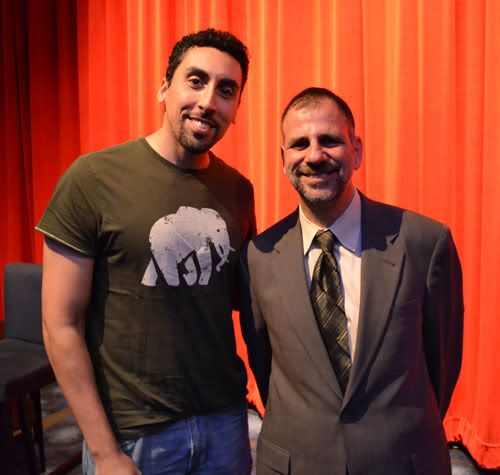 |
| Hangin' with Sam |
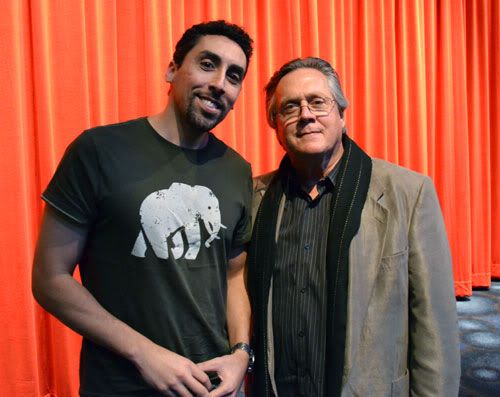 |
| With David Price |
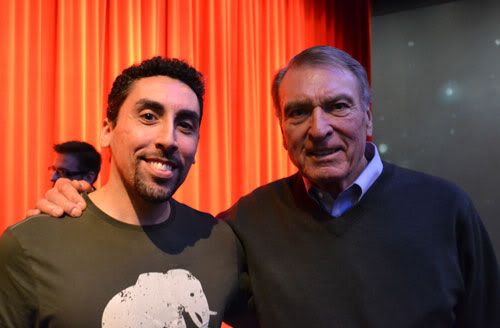 |
| One of the few men that makes me feel short! Ron Miller. |
This was a thoroughly intriguing look into what would have completely changed the landscape of what we call "the ski resort." Special thanks to Sam Gennawey for the engaging presentation (oh and check out his book! I am halfway through it and it’s awesome), David Price for his contribution and willingness to let me know if any of my recap was goofed (accurate information is paramount), and Ron Miller for the wonderful stories and for being so nice to me afterwards. I would also like to thank Mark from disneybymark.com for letting me use his amazing “Holiday Hill” photo, and Mister Jeff Kurtti. Jeff wasn’t one of the presenters this time, but he helped Sam put much of the material together, and he also acted as my photographer during picture time. Thanks Jeff!
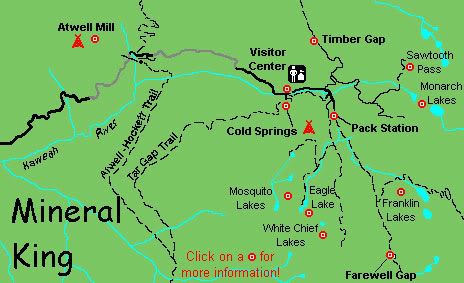
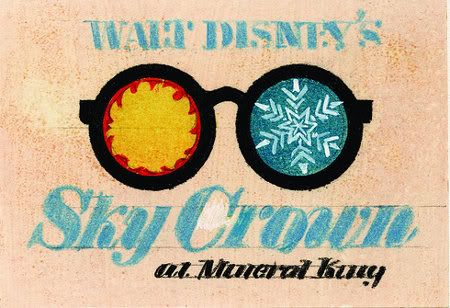
This is an absolutely terrific summary of the event. Thank you very much.
ReplyDeleteSam Gennawey
Thank you Sam!
DeleteReally interesting. Great write-up!
ReplyDeleteI knew about the proposed project but this fleshes out some of the details. No doubt it would have been an amazing ski resort, but I'm really really thankful that it didn't happen. Mineral King is much better the way it is now, with little to no development and the mining remnants now fading away - to huge benefit to Sequoia National Park and the Golden Trout Wilderness also not having a huge ski resort right in the middle of their remote areas. Mineral King is an amazing place, and I definitely recommend a visit and at least a couple nights camping if not some hiking and backpacking!
It's interesting they skied there. I wonder where. Was there ever a lift?